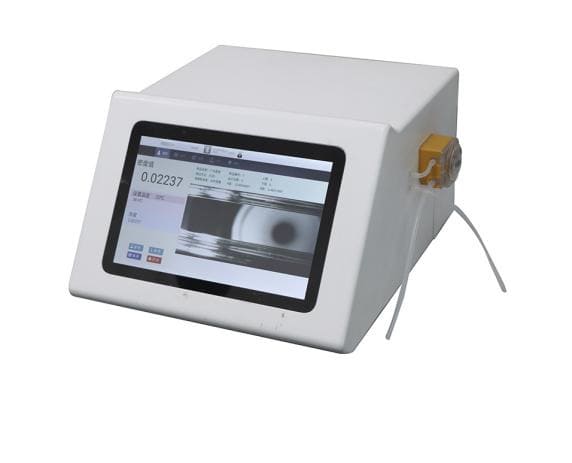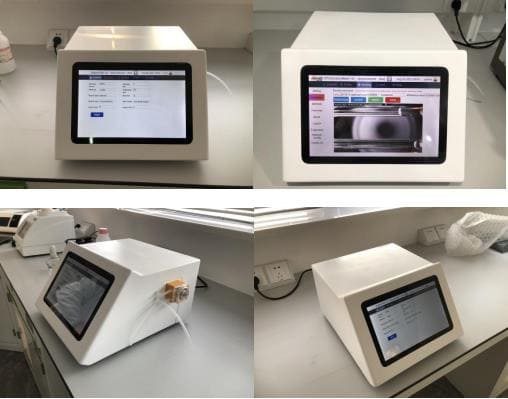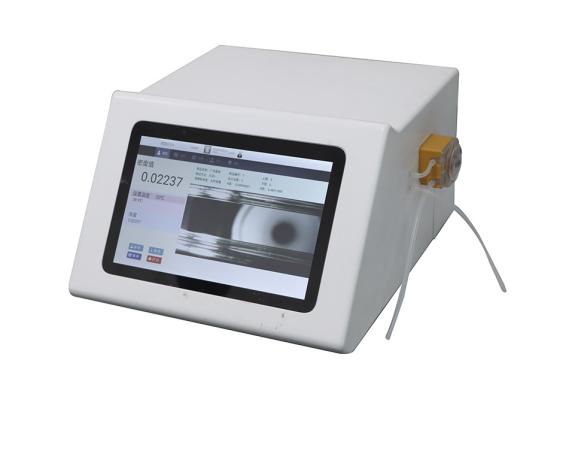Density Meter is popularly used in the laboratory. Today this article introduces the principle of density meters and types of density meters.
Principle of Density Meter
The object’s gravity pulls the object toward the ground. However, if the object is placed in a liquid, a force called buoyancy acts in the opposite direction. The magnitude of the buoyant force is equal to the weight of the fluid displaced by the object, or the fluid displaced.
The gravity of the density meter is constant, and it floats or sinks according to the change in buoyancy. A functioning densitometer floats after being placed in a liquid long enough (provided the measured liquid density does not exceed its range) that buoyancy pushes up as much as gravity pulls down.

The density meter reading down big up small is because of mg=pgV. The deeper the densitometer enters the liquid, the larger the volume V of the displaced liquid is. Besides, the mg is constant, so the density of the liquid is smaller at this time. Therefore, the reading of the density meter is large at the bottom and small at the top, and its indication indicates the density of the liquid, and the unit is g/cm.
The density meter method is suitable for analyzing fine particles with a particle size smaller than 0.075 mm. Stokes’ law holds that the sinking speed of spherical fine particles in water is proportional to the square of the particle diameter. Therefore, the principle that soils with different particle sizes sink at different speeds in water can be used to further group fine particles with a particle size as small as 0.075 mm. The density meter method is based on this principle. Stokes’ law assumes:
① the particle is spherical;
② the water flow around the particle is linear;
③ the size of the particle is much larger than the molecule.
The particle size obtained by the density meter method is not the actual ten-grain size, but the diameter of an ideal sphere with the same settling velocity as the actual ten-grain in the liquid, that is, the hydraulic equivalent diameter or nominal diameter. The densitometer method can measure the suspension density at the distance L of soil particle settlement, and calculate the cumulative percentage content smaller than the particle size d. Using different test times t, the relative content of the measurable fine particle group can be determined.
Types of Density Meter
Liquid Density Meter: A liquid density meter is a commonly used original measuring instrument in engineering. The liquid density meter is a photoelectric measuring instrument for measuring the gray value of black and white originals and measuring the continuous tone or dot value. There are two types of densitometers: transmission densitometers and reflection densitometers. The liquid density meter used in physical experiments is an instrument for measuring the density of liquids. The liquid density meter is manufactured and works according to the principle that the buoyancy force on the object floating in the liquid is equal to gravity.
The liquid density meter uses the principle of the vibrating cylinder density sensor to test the liquid density. After the liquid to be measured is pumped into the sensor of the resonant cylinder, the measurement process is performed by a single-chip microcomputer, which is fast, direct, and highly sensitive. The density meter can be widely used to measure the density of various liquids. With different concentration conversion software, it can also directly read the concentration value or specific gravity of the corresponding liquid, such as alcohol.
Through the processing of single-chip computer software, it can directly read the volume concentration. Besides, testing is easier. The instrument is suitable for measuring the density of various chemical reagents (except hydrofluoric acid), liquid food and beverage (if containing carbonic acid, the air bubbles should be eliminated first), petroleum liquid products, and other various chemical liquid products. It does not require skilled analysts and does not depend on the measurement environment. It is the best tool for safely measuring the density and solution concentration of liquids on site.

Types of Liquid Density Meter
Commonly used liquid density meters and hydrometers include float density meters, static pressure density meters, vibration density meters, and radioisotope density meters.
1. Float Density Meter
Its working principle is: the buoyancy force that the object receives in the fluid is related to the fluid density, and the greater the fluid density, the greater the buoyancy force. If the temperature of the sample to be measured is specified (for example, 25°C), the instrument can also use the specific gravity value as the scale value. The simplest of these instruments is the visual float-type glass hydrometer, referred to as the glass hydrometer.
2. Static Density Meter
Its working principle is: the static pressure of a liquid column at a certain height is proportional to the density of the liquid, so the density of the liquid can be measured according to the static pressure value measured by the pressure measuring instrument.
The diaphragm (see Diaphragm and Diaphragm) is a commonly used pressure measuring element, and a density meter that directly measures the static pressure of the sample liquid column with it is called a diaphragm static pressure density meter. Another commonly used one is the single tube blown density meter. It measures air pressure instead of the direct measurement of liquid column pressure. Insert the blowing tube to a certain depth below the liquid surface to be measured, and the compressed air will continuously escape from the bottom of the tube through the blowing tube. At this time, the pressure of the air in the tube is equal to the pressure of the sample liquid column at that height, and the pressure value can be converted into density.
3. Vibrating Density Meter
Its basic working principle is: when an object is excited to vibrate, its vibration frequency or amplitude is related to the mass of the object itself. If a certain volume of the liquid sample is filled in the object, the change of its vibration frequency or amplitude will reflect the mass or density of the certain volume of sample liquid.
4. Radioisotope Density Meter
The instrument is equipped with a radioactive isotope radiation source. Its radioactive radiation (such as v-ray) is received by the radiation detector after passing through a certain thickness of the tested sample. The amount of radiation absorbed by a sample of a certain thickness is related to the density of the sample, and the signal of the radiation detector is related to the amount of absorption, thus reflecting the density of the sample.

